Updated: 17th January, 2019.
> Home > The Best Credit Cards for 2019 > The Best Balance Transfer Credit Cards
We’ve vetted some of the most popular credit cards on the market to bring you our shortlist of the best credit cards for balance transfers. These cards can be great for those looking to consolidate credit or gain some flexibility in paying down credit balances.
Our top balance transfer picks at a glance:
- Santander Everyday Credit Card
- M&S Transfer Plus Credit Card
- Sainsbury’s Bank No Fee Balance Transfer Card
- Halifax No Fee Balance Transfer Credit Card
- Lloyds Bank Platinum No Fee Balance Transfer Card
- Lloyds Bank Platinum Low Fee 0% Balance Transfer Credit Card
- Barclaycard 29 Month Balance Transfer Platinum Card
- HSBC Balance Transfer Credit Card
- Halifax Low Fee 0% Balance Transfer Card
- Post Office Balance Transfer Card
- Tesco 0% Balance Transfer Fee Credit Card
Santander Everyday Credit Card
Good for: Balance transfers with no fee
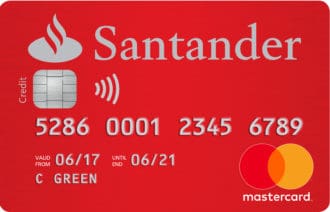
Our Bottom Line
Santander’s Everyday Card stacks up really well against the competition. 27 months of 0% interest on balance transfers is on the longer end of the scale, especially without a fee on balance transfers. The three months of 0% interest on purchases is a bit shorter than some competing cards, but it’s still nice to get that 0% purchase period. As a sweetener, there are cashback awards available from companies like Costa Coffee, Subway, and Morrisons through Santander’s “Retailer Offers”.
Full Santander Everyday Credit Card review
Representative APR (variable):
18.90%
Balance transfer fee:
0.00%
M&S Transfer Plus Credit Card
Good for: Really long balance transfer period

Our Bottom Line
The M&S Transfer Plus card gives you a very long 28 months of 0% interest on balances transferred in the first 90 days. Users will have to cough up a balance-transfer fee, but at 0.99%, it’s lower than most BT fees. Balancing that out, the M&S Transfer Plus also offers 0% for 6 months on purchases and M&S rewards on all purchases.
Full M&S Transfer Plus Credit Card review coming soon!
Representative APR (variable):
19.90%
Balance transfer fee:
0.99%
Sainsbury’s Bank No Fee Balance Transfer Card
Good for: Balance transfers with no fee

Our Bottom Line
There’s a lot to like with the Sainsbury’s Bank balance transfer card. Cardholders get 22 months of 0% interest on balance transfers along with fee-free balance transfers over the first three months. In addition, cardholders can also take advantage of 0% interest on purchases over the first three months. And like other Sainsbury’s cards, users get perks in the form of Nectar points.
Full Sainsbury’s Bank No Fee Balance Transfer Card review
Representative APR (variable):
19.90%
Balance transfer fee:
0.00%
Halifax No Fee Balance Transfer Credit Card
Good for: Balance transfers with no fee
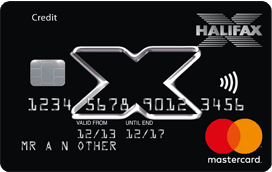
Our Bottom Line
This Halifax Balance Transfer card strikes a nice balance between offering 22 months of 0% interest on balance transfers, along with no-fee balance transfers over the first 90 days. A nice additional perk is a 6-month window for 0% interest on purchases. In all, this is a nice choice for those looking for some time to pay down balances without racking up extra interest charges.
Full Halifax No Fee Balance Transfer Credit Card review
Representative APR (variable):
19.90%
Balance transfer fee:
0.00%
Lloyds Bank Platinum No Fee Balance Transfer Card
Good for: Balance transfers with no fee
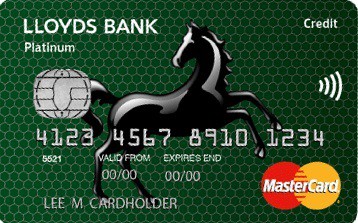
Our Bottom Line
Simple is good, and with this Lloyds Bank Platinum balance transfer card you get 20 months of 0% interest on balance transfers and you pay no fee on balances transferred within the first 90 days. In addition, cardholders get an extra kicker of 6 months 0% interest on purchases. If you’re looking to consolidate credit, simplify, or just give yourself some more flexibility on paying down balances, this could be a nice choice.
Full Lloyds Bank Platinum No Fee Balance Transfer Card review
Representative APR (variable):
19.90%
Balance transfer fee:
0.00%
Lloyds Bank Platinum Low Fee 0% Balance Transfer Credit Card
Good for: Really long balance transfer period

Our Bottom Line
If what you’re looking for is a really long 0% interest period on your balance transfers, this Lloyds Bank Platinum Card may be what you’re looking for. Balance transfers need to be made in the first 90 days and you’ll pay a 1.4% effective fee (after rebate), but that’s often the tradeoff for longer-duration balance transfer cards. In exchange, you’ll get 32 months 0% interest on those balances. Add to that 12 months of 0% interest on purchases.
Full Lloyds Bank Platinum Low Fee 0% Balance Transfer Credit Card review
Representative APR (variable):
19.90%
Balance transfer fee:
1.40%
Barclaycard 29 Month Balance Transfer Platinum Card
Good for: Really long balance transfer period
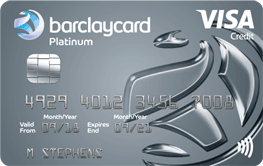
Our Bottom Line
The Barclaycard Platinum 29-month balance transfer card features an long 29 months of 0% interest on balance transfers. The drawback is that there is a fee for balance transfers, which is often the case when looking at the balance transfer cards with the longest duration. As an added sweetener, there’s also 0% on purchases for six months and ongoing access to your Experian Credit Score.
Full Barclaycard 29 Month Balance Transfer Platinum Card review
Representative APR (variable):
19.90%
Balance transfer fee:
2.50%
HSBC Balance Transfer Credit Card
Good for: Really long balance transfer period

Our Bottom Line
Take a look around and you’ll see balance-transfer offers declining. That makes the 32 months on HSBC’s Balance Transfer Card more impressive. There is a balance-transfer fee, but at 1.4%, it’s lower than the typical BT fee. And right now HSBC is offering £25 cashback on balance transfers of £300.
Full HSBC Balance Transfer Credit Card review coming soon!
Representative APR (variable):
21.90%
Balance transfer fee:
1.40%
Halifax Low Fee 0% Balance Transfer Card
Good for: Long balance transfer period plus purchase offer

Our Bottom Line
The Halifax Low Fee 0% Balance Transfer Card may be your answer if you’re looking for a very long balance transfer period, but want to keep the balance-transfer fee low. You get 24 months of 0% interest on balance transfers, and in exchange for that long duration, you do pay a fee on balance transfers. But at 1.5% (after rebate), the fee is lower than other ultra-long-duration balance transfer cards. The card also gives you 12 months of 0% APR on purchases, which is a nice bonus.
Full Halifax Low Fee 0% Balance Transfer Card review
Representative APR (variable):
19.90%
Balance transfer fee:
1.50%
Post Office Balance Transfer Card
Good for: Really long balance transfer period

Our Bottom Line
The Post Office Balance Transfer Card is one of the options that gives you a massive amount of time to pay down those balance transfers: 32 months! Consider whether you need quite that much time though, since long durations like this normally come with a balance transfer fee. In this case 2% on whatever you transfer. With this card you also get 0% on purchases over the first three months and fee-free travel money if you go to the Post Office or pay online.
Full Post Office Balance Transfer Card review
Representative APR (variable):
19.90%
Balance transfer fee:
2.00%
Tesco 0% Balance Transfer Fee Credit Card
Good for: Balance transfers with no fee
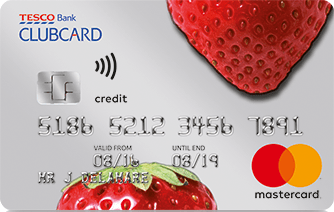
Our Bottom Line
Don’t overlook the Tesco 0% Balance Transfer Fee Credit Card. The 22-month balance transfer period isn’t on the super-long end, but it’s still nearly two years. Better still, you won’t pay a fee on your balance transfers. This is a better choice if you’re just looking for balance transfers, as there’s no 0% purchase period. However, you will collect Tesco Clubcard points when you shop with this card.
Full Tesco 0% Balance Transfer Fee Credit Card review
Representative APR (variable):
19.90%
Balance transfer fee:
0.00%
About Balance Transfer Cards
Balance transfer credit cards are an underrated financial tool for people who have high-interest credit card debt. Our favorite balance transfer credit cards offer long 0% intro APR periods that allow you to avoid interest on your balances, pay down debt faster, and free yourself of costly credit card debt forever. Used wisely, a balance transfer card can save you thousands of dollars in interest compared to carrying a balance at a typical APR of 19% per year. Some cards offer 0% intro APRs for 30 months or longer on amounts transferred, though with the longest 0% offers, you often face a fee (typically around 3%) on the amount transferred. If you’re willing to settle for a somewhat shorter 0% period, you can find many cards that don’t have a balance-transfer fee, and thus offer truly free short-term financing.
How we picked the winners
With many financial decisions – and really, decisions in general – there are often just a few key factors that really make a difference, while most everything else is noise that risks overcomplicating the choice. We want to help you confidently find the best credit cards for your needs, which is why the lens through which we picked the top balance-transfer credit cards focuses heavily on the following features:
- Length of the 0% intro APR for balance transfers
- Inclusion and length of a 0% intro APR for purchases
- Fees, including balance transfer fees and annual fees
- The representative APR for the card after the intro APR period
WHY YOU CAN TRUST US
Together, we’ve published thousands of financial articles around the world, helping readers make better financial and investing decisions. Apart from The Motley Fool, our team’s work and analysis has appeared in other publications such as the Financial Times, The Daily Telegraph, the Guardian Unlimited, and The Observer, and has been cited in books and scholarly research. Today, we’re laser focused on helping you make better choices with your money.
What is a balance transfer?
A balance transfer occurs when a borrower moves a balance from one credit card to another. Balance transfers are most often used to refinance credit card debt at a low interest rate (e.g. a balance on a card at an 19% APR is transferred to a card with a 0% intro APR).
It’s important to remember that 0% intro APR balance transfer offers are a promotional benefit that do not last forever. After the 0% intro APR expires, any remaining debt will begin accruing interest at the standard APR.
For this reason, cardholders who use a 0% balance transfer offer to move a balance would be wise to pay down their balances aggressively before the promotional period ends.
How do balance transfers work?
A balance transfer is a simple process. In effect, the card company you are moving your balance to pays the card company you are moving your balance from.
For example, if you move a £5,000 balance from Santander to Sainsbury’s Bank, then your Santander balance will decrease by £5,000, and your Sainsbury’s Bank card balance will increase by £5,000 (plus any applicable balance transfer fees).
Importantly, you cannot typically move a balance on one card to another card issued by the same company. Credit card companies use balance transfers as a way to win business from other card issuers, not as a way to refinance their existing customers. The best credit card balance transfer deals are almost always changing as companies introduce new cards and promotions, so it can be smart to shop around before picking the right card for you.
How to save money with a balance transfer
Using a 0% intro APR balance transfer to refinance existing credit card debt can save you a fortune in interest over the 0% promo period. The difference between paying 0% in interest and 18% in interest is substantial, particularly for people who have larger balances.
The table below shows you how much you can save in interest by using a 0% intro APR balance transfer offer to pay off a £5,000 credit card balance during the promo period compared to paying down the same debt over the same period of time at an 18% APR.
Interest saved by paying off a £5,000 balance with a 0% intro APR card
| 12 months | £500.80 |
| 15 months | £620.80 |
| 18 months | £742.54 |
| 21 months | £865.93 |
The amount of interest you can save is highly dependent on the duration of the balance transfer offer, the interest rate you pay on your existing debt, and how much debt you have to repay. That said, most people will find that a 0% balance transfer offer can save them hundreds, if not thousands of pounds in interest compared to a balance carried at an ordinary double-digit APR.
Using balance transfers to pay off debt faster
Balance transfers can help you save money on interest, which can equate to helping you pay down your debt faster. That’s because your payments will be applied solely to the principal (not interest) during the 0% intro APR period.
Consider an example where you want to pay off a £5,000 balance with monthly payments of £200. The table below shows how you can save £1,130 in total interest payments and pay off the balance six months faster with a 15-month balance transfer offer.
| APR | Monthly payment | Time to pay off | Interest paid |
| 0% for 15 months, 18% thereafter | £200.00 | 26 months | £183.24 |
| 18% APR | £200.00 | 32 months | £1,313.97 |
The interest you can save by using a 0% intro APR card is easy to quantify, but there is also a lot to be said about the stress-reducing benefits of paying off a debt six months earlier. People who are in the market to buy a home or car, for example, would benefit by eliminating credit card debt before financing another large purchase.
The balance transfer card checklist
A balance transfer credit card is not for everyone. In the right hands, a balance transfer credit card can be a powerful financial tool used to pay off debt. Used incorrectly, however, a balance transfer credit card can be used to get even deeper into debt.
If these three statements apply to you, then you are likely a good candidate for a balance transfer credit card:
- You have existing credit card debt at a high APR.
- You are serious about paying off your credit card debt once and for all.
- You won’t rack up a new balance on your old credit card after transferring the balance to a new credit card.
When it comes to 0% APR cards, shopaholics and lazy budgeters need not apply. Many people get into trouble by opening a balance transfer credit card account, moving a balance, then racking up another large balance on their old credit card at double-digit interest rates while making little to no progress paying down the balance they moved in the first place.
Savvy people use low interest balance transfer credit cards for the specific purpose of refinancing high interest credit card debt. Often, that means moving a balance to take advantage of a low or 0% intro APR, and then putting all your credit cards in your sock drawer until the transfer (and any other credit card debt) is paid off in full.
Everything about balance transfer fees
The typical fee is £5 or 3% — Many credit cards charge a fee to transfer a balance to them, especially when they offer a very long 0% peroid. The typical transfer fee is £5 or 3% of the amount transferred, whichever is greater, but some charge even more. On a £5,000 balance, that means you could pay £150 or more in fees just to move the balance to another card.
Balance transfer fees are added to your balance — Keep in mind that balance transfer fees are rolled into your balance. Therefore, if you move a £5,000 balance to another credit card, you will have a balance of £5,150 on the balance transfer card if it charges a fee of 3% on transfers. When the 0% intro APR expires, all balances (including the fee) begin accruing interest.
It’s our view that people who are serious about paying down credit card debt should prioritize cards that waive balance transfer fees for new cardholders, or do not have balance transfer fees at all, even if it means getting a shorter 0% intro APR period.
The table below shows you how a 15-month 0% intro APR offer without balance transfer fees works out to be a slightly better deal than a 21-month 0% intro APR offer that carries a 3% balance transfer fee when paying off a £5,000 balance with £200 monthly payments.
Comparing two balance transfer cards for a £5,000 balance
| Balance transfer APR offer | Transfer fee | Monthly payment | Time to pay off debt | Total fees and interest |
| 0% for 15 months, 18% thereafter | £0 | £200 | 26 months | £183.24 |
| 0% for 21 months, 18% thereafter | 3% of the transfer amount | £200 | 26 months | £192.97 |
Many people overvalue a longer 0% promo APR, falsely believing that it makes sense to pay a fee for a longer 0% intro period. But in this example, the shorter promo period is actually better. That’s because transfer fees are assessed on all amounts you transfer, whereas interest is only charged on amounts that remain after the 0% intro period expires. By the time the interest kicks in on either offer, much of the debt has already been repaid!
What the best balance transfer credit cards offer
There are three things you should look for when it comes to balance transfer cards.
- A long 0% intro APR period of at least 15 months
- Low or no balance transfer fee — 3% is average and lower is better
- 0% APR on purchases if you plan to make purchases with the card
The best credit card for balance transfers should offer a long 0% intro APR on balance transfers and little to no fees to transfer a balance. If you plan to use the balance transfer card to make purchases, you want to find a card that offers a 0% APR on purchases, too.
A 0% intro APR on purchases is more important than you might think. Suppose you have a card with a £5,000 balance, of which £4,000 is from a 0% intro APR balance transfer, and £1,000 is from purchases you made a month after getting the card. When you receive your statement in the mail, the credit card might require you to make a minimum payment of at least £200, or 4% of your balance that month.
If you make the minimum payment of £200, all of the payment would be used to pay down the £5,000 balance transfer at a 0% APR. However, if you pay more than the minimum… say, £1,000, then £200 would be applied toward the 0% APR balance, and £800 would be applied toward the £1,000 purchase balance.
Credit card companies only have to apply amounts in excess of the minimum monthly payment to your highest APR balance. That means if you don’t pay an amount equal to your purchase balance and minimum payment each month, you might end up paying down your 0% intro APR balance transfer while racking up purchase debts at an 18% APR. This can be a costly mistake.
It’s also notable that while card companies are required to apply payments in excess of the minimum payment to your highest-interest debt, not every issuer defines this the same way. Imagine a card with an introductory offer of 0% APR on balance transfers for 18 months and 0% APR on purchases for six months. You might think that payments above your minimum would go towards your purchase balance, since that will begin accruing interest sooner. Most credit card issuers do exactly this.
However, some, with MBNA as a notable example, define the higher interest debt as the debt that will have the highest rate at the end of the promotional period. So if the balance transfer portion will have a higher rate after the end of the 18-month 0% promotional period, excess payments will be applied to that balance, even though the 0% promotional period ends sooner on the purchase balance. For this reason, it’s important to always read the terms and conditions of the cards that you take out.
You can avoid this problem by employing one of three basic strategies:
- Only use balance transfer cards for purchases when they offer 0% intro APRs on balance transfers and purchases for the same length of time.
- If a 0% balance transfer card does not offer a 0% intro APR on purchases, don’t put purchases on the credit card until the 0% balance transfer APR expires, or until you pay off the 0% APR balance transfer.
- When you make a monthly payment, pay an amount equal to your purchase balance for that statement plus the minimum payment to avoid building up a purchase balance at a high APR. If your minimum payment is £100 and your purchase balance is £500, you should pay at least £600 to avoid interest on the purchase balance.
All three of these strategies will enable you to get the full benefit of a 0% intro APR on balance transfers and avoid building up debt from purchases at high interest rates. The easiest route often makes the most sense — transfer a balance to get a 0% promo APR and then avoid using the card for purchases until the transfer is paid off or the 0% promo APR expires.
Credit scores and balance transfer cards
You do not need perfect credit to qualify for a balance transfer credit card. Card issuers know that people who apply for balance transfer cards are likely to carry an existing balance with another issuer, which could have already marred your credit score. (What are balance transfers good for if not for transferring existing credit card debt?)
A good to excellent credit score will get you access to most balance transfers on the market, including those that offer 18 months or more of 0% intro APRs. People who have fair credit can often be approved for most offers as well.
Importantly, credit scores are not the only factor issuers use to decide whether or not to approve you for a card. Your income, mortgage or rent payments, and payments due on other debts also play a role in deciding whether or not you get approved for a new balance transfer card.
Use a balance transfer offer the smart way
When used correctly, a balance transfer can help you pay down debt faster, avoid interest on your balances, and get you back on track toward a life free of credit card debt.
As for actually using a balance transfer, there are only five things you need to do:
- Get approved for a balance transfer card. You may receive offers from a credit card you already have but offers for new cardholders are usually much better than the offers issuers send to existing customers.
- Transfer your balances. Many card issuers allow you to transfer a balance at the time of your application, while others will require you to request a balance transfer after approval, either by phone or online.
- Continue to make payments on your old card. A balance transfer can take up to one to two weeks to process. Continue to pay at least the minimum payment on your old credit card until you see that the balance transfer amount was deducted from your old card. There may be a small amount of interest due in the month following your balance transfer, even if you move your whole balance, so it’s a good idea to check back after the balance transfer is complete so that you don’t get slapped with a massive late fee for failing to pay a few dollars in remaining interest.
- Pay down your balances as fast as you can. A 0% intro APR or low interest rate on a balance transfer offer won’t last forever, so it’s imperative that you use the promo period wisely. If your card doesn’t offer the same promotional terms on purchases, consider using it solely for the balance transfer to avoid piling up debt at a higher purchase APR.
- Avoid the temptation to rack up new balances. Transferring a balance to a credit card frees up capacity on another credit card. If you have a tendency to overspend, it may be smart to avoid credit cards altogether while you pay down that existing credit card debt.
Return to our best balance transfer credit cards for 2018
5 Things You MUST Check Before You Apply For A Credit Card
Thanks to the research we’ve done for you, you should have a good idea of which credit card suits your needs best. Now there’s just one more important page you need to read: “5 Things You MUST Check Before You Apply For A Credit Card” is a special report from The Motley Fool, and it’s completely free!
This expertly prepared report will inform you how to repair your credit history, explain why your credit report may contain errors and how you can fix these, as well as guide you through exactly how the UK credit scoring system works and why you need to understand it. All that’s left to do is click here for access, and it won’t cost you a penny!
The Motley Fool receives compensation from some advertisers who provide products and services that may be covered by our editorial team. It’s one way we make money. But know that our editorial integrity and transparency matters most and our ratings aren’t influenced by compensation. The statements above are The Motley Fool’s alone and have not been provided or endorsed by bank advertisers.
The Motley Fool Ltd is an Appointed Representative of Richdale Brokers & Financial Services Ltd, (FRN: 422737) for acting as a credit-broker, not a lender, for consumer credit products.